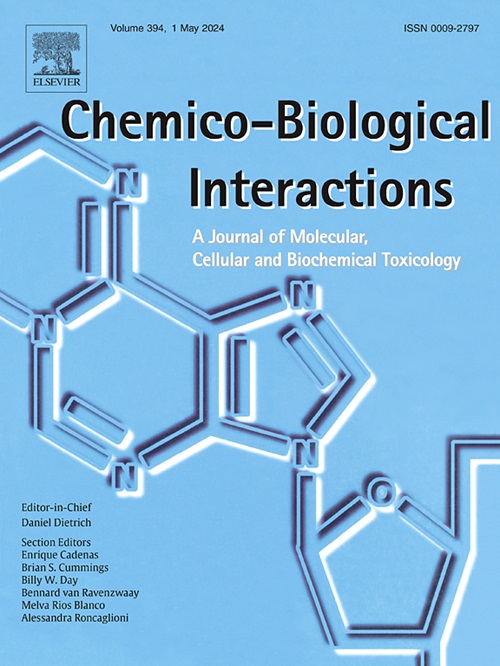去铁胺诱导的神经毒性:伴侣介导的自噬功能障碍在海马神经元凋亡中的作用。
IF 4.7
2区 医学
Q1 BIOCHEMISTRY & MOLECULAR BIOLOGY
引用次数: 0
摘要
甲磺酸去铁胺(DFX)是一种微生物衍生的铁螯合剂,用于血液学治疗急性铁中毒和慢性铁超载。许多研究报告了DFX暴露引起的不良神经事件,但将这些事件与铁中毒的影响区分开来是具有挑战性的。本研究旨在评估单独接触DFX是否会直接损害神经功能,并阐明其毒理学机制。我们的体内和体外实验结果表明,DFX暴露可以直接导致小鼠的情绪和认知功能障碍。由伴侣介导的自噬(CMS)功能障碍导致的神经元凋亡被确定为dfx诱导的神经元损伤的关键毒理学机制。本研究为全面监测和及时管理与DFX暴露相关的神经毒性不良事件提供了证据,并为开发预防和治疗这些事件的药物以提高患者的生活质量奠定了基础。本文章由计算机程序翻译,如有差异,请以英文原文为准。

Deferoxamine-induced neurotoxicity: Role of chaperone-mediated autophagy dysfunction in neuronal apoptosis in the hippocampus
Deferoxamine mesylate (DFX) is a microorganism-derived iron chelator used in hematology to treat acute iron intoxication and chronic iron overload. Many studies have reported adverse neurological events from DFX exposure, but it is challenging to distinguish these from the effects of iron intoxication. This study aimed to evaluate whether DFX exposure alone can directly impair neurological functions and to elucidate its toxicological mechanisms. Our findings from in vivo and in vitro experiments indicate that DFX exposure can directly cause emotional and cognitive dysfunction in mice. Neuronal apoptosis, resulting from chaperone-mediated autophagy (CMS) dysfunction, was identified as a key toxicological mechanism underlying DFX-induced neuronal impairment. This study provides evidence for the comprehensive monitoring and timely management of neurotoxic adverse events associated with DFX exposure, as well as a foundation for developing medications to prevent and treat these events to enhance patient quality of life.
求助全文
通过发布文献求助,成功后即可免费获取论文全文。
去求助
来源期刊
CiteScore
7.70
自引率
3.90%
发文量
410
审稿时长
36 days
期刊介绍:
Chemico-Biological Interactions publishes research reports and review articles that examine the molecular, cellular, and/or biochemical basis of toxicologically relevant outcomes. Special emphasis is placed on toxicological mechanisms associated with interactions between chemicals and biological systems. Outcomes may include all traditional endpoints caused by synthetic or naturally occurring chemicals, both in vivo and in vitro. Endpoints of interest include, but are not limited to carcinogenesis, mutagenesis, respiratory toxicology, neurotoxicology, reproductive and developmental toxicology, and immunotoxicology.

 求助内容:
求助内容: 应助结果提醒方式:
应助结果提醒方式:


